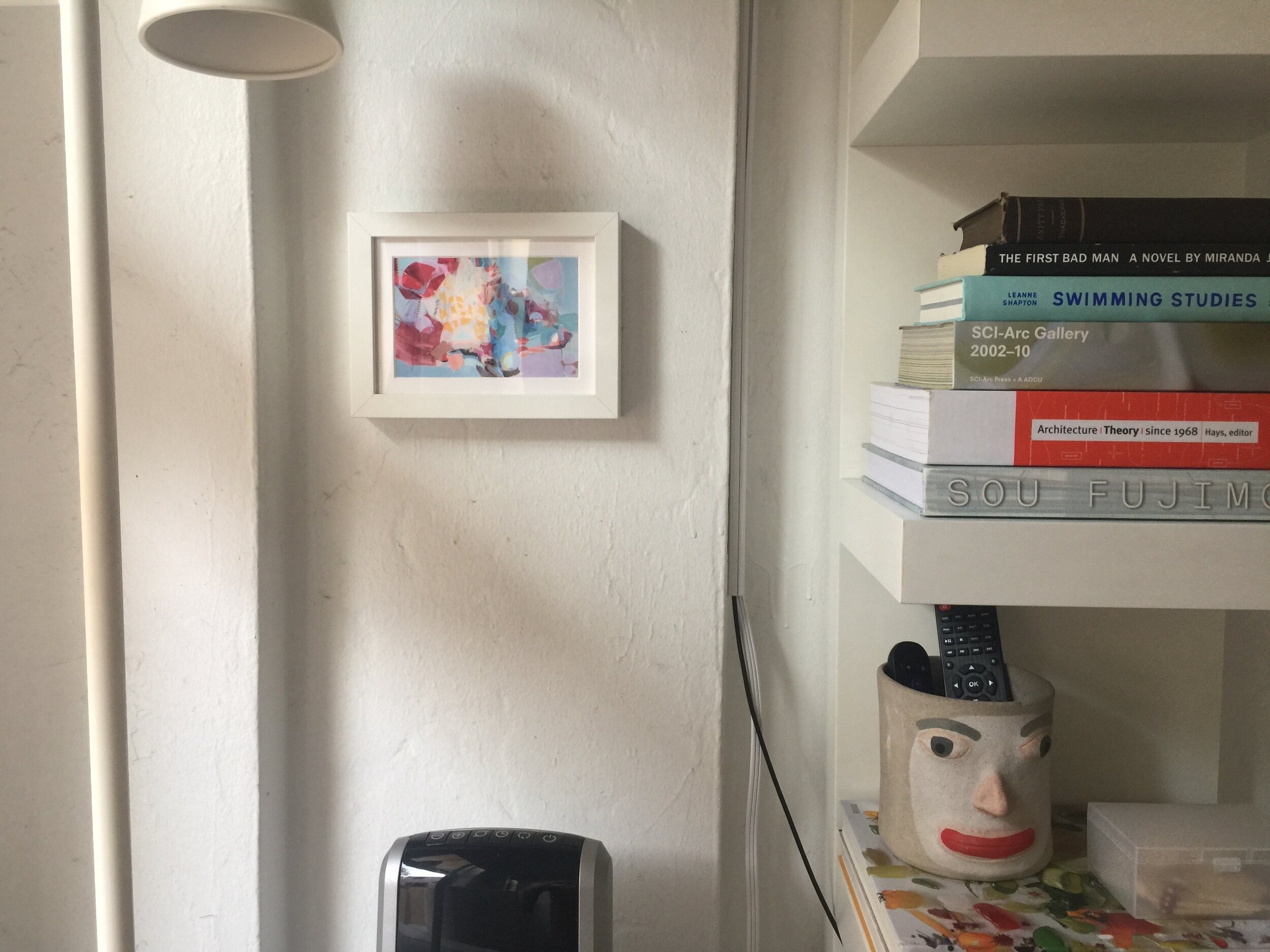
Workman Street
2014
After
Student digs, reconsidered.
When Winston moved to Los Angeles for graduate school, he needed housing—fast. His requirements? A one-bedroom for under $1,000 per month, within a fifteen-minute drive from school, and with good bones. Friends said it was impossible, but within two days of arriving in L.A., Winston proved them wrong. He found a one-bedroom on Workman Street that checked every box: $825 per month, ten minutes to school, and full of potential. The only catch? It was a complete dump.
Before
Harness the power of paint.
The apartment’s previous renters had left it in shambles. The hardwood floors were a ghastly shade of dried blood, while the walls screamed a chunky, faded yellow reminiscent of creamed corn. Winston submitted his rental application along with a small portfolio of his design work, requesting permission to strip out built-in cabinets and paint the entire apartment white. The landlord agreed. White paint can transform a space, abstracting it and reflecting light to open up the room. With just $3,500 to spend, Winston began his makeover, allocating the budget for kitchen appliances, paint, shelving, furniture, and all the essentials.
Keep it personal.
In the dining area, Winston added character by hanging prints and mementos from his travels: a Berlin metro card, a poem, a wooden spoon from Morocco, and pegs for kitchen tools. Each piece added warmth and made the space distinctly his.
Don’t box it in.
The apartment was just 600 square feet, so maximizing the feeling of openness was key. Instead of opting for a bulky desk, Winston installed a simple floating one to let the eye travel all the way to the wall’s edge, making the room feel larger than it was.
Use the walls.
Winston took advantage of vertical storage by hanging knives on magnetic strips instead of using a counter-cluttering knife block. Every bit of wall space was utilized to keep surfaces clear and functional.
Collaborate.
Upon moving in, Winston learned that tenants on the ground floor were allowed to use the small strips of land in front of each unit. Most used these spaces for trash cans, but Winston had a different vision. He convinced his fellow residents to move their trash and recycling to a communal area, freeing up space for everyone to enjoy their micro gardens.
Indirect lighting wins.
One of Winston’s first moves was to eliminate the overhead lighting. Nothing kills a cozy ambiance faster than a blinding overhead light. Instead, he installed light strips in concealed corners, like those illuminating the floating shelves where he stored dinnerware. A simple pot rack kept cookware accessible yet out of the way.
Negative space.
Small spaces don’t always need small furniture. While he used the walls for vertical storage, Winston was intentional about leaving some areas completely empty. In the bedroom, he left the walls bare except for the original heater, choosing a king-size storage bed and two floating shelves over bulky side tables. This deliberate use of negative space made the room feel both spacious and serene.
In the press
Apartment Therapy featured my student digs in a story entitled “Winston’s (Mostly) Monochrome Home”. To read it, click on the link below.









